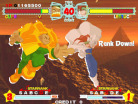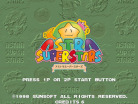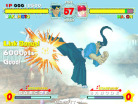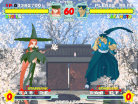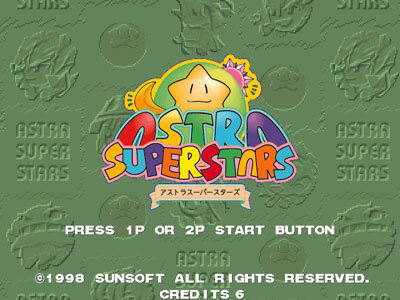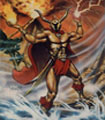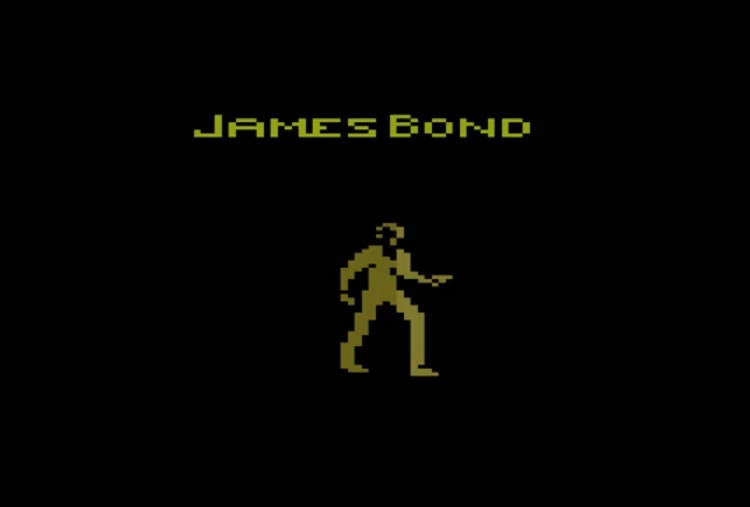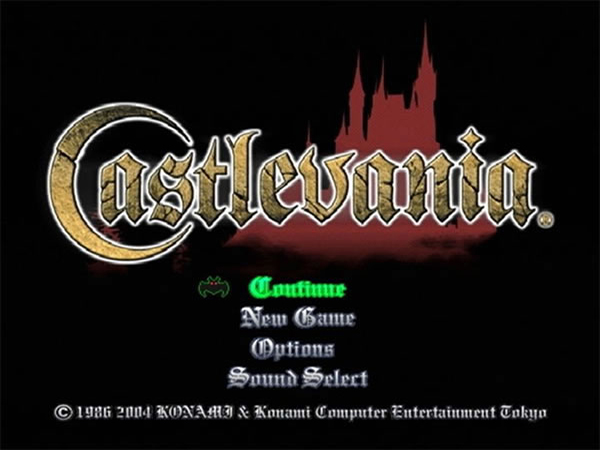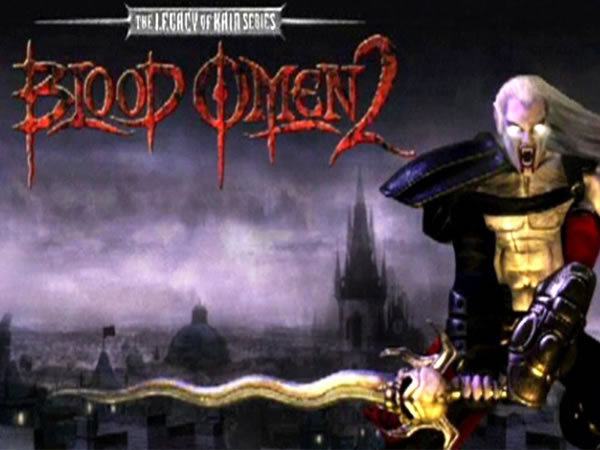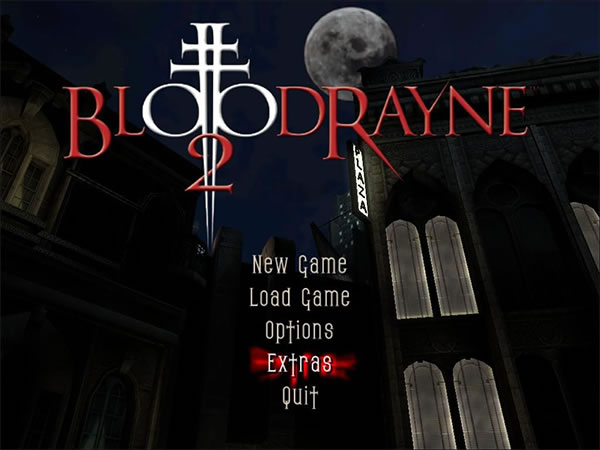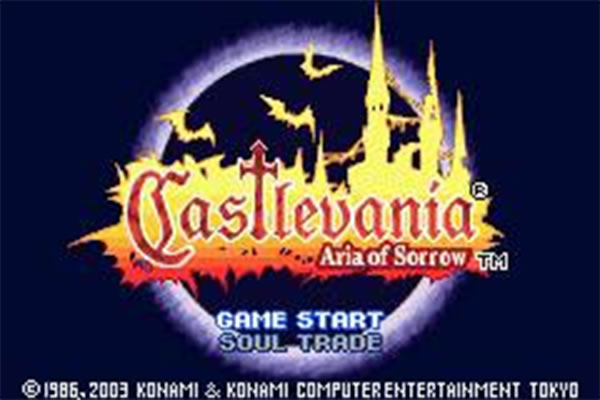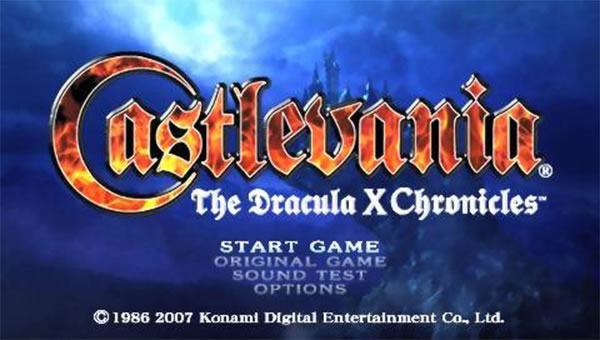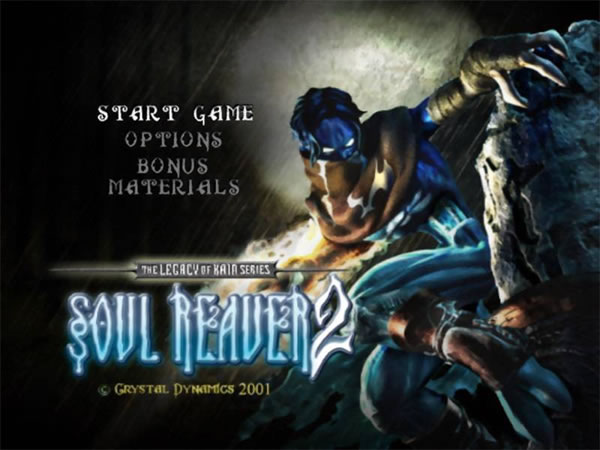- CLASSIC MAGAZINES
- REVIEW CREW
A show recapping what critics thought back
when classic games first came out! - NEXT GENERATION'S BEST & WORST
From the worst 1-star reviews to the best
5-stars can offer, this is Next Generation! - NINTENDO POWER (ARCHIVE)
Experience a variety of shows looking at the
often baffling history of Nintendo Power! - MAGAZINE RETROSPECTIVE
We're looking at the absolutely true history of
some of the most iconic game magazines ever! - SUPER PLAY'S TOP 600
The longest and most ambitious Super NES
countdown on the internet! - THEY SAID WHAT?
Debunking predictions and gossip found
in classic video game magazines! - NEXT GENERATION UNCOVERED
Cyril is back in this spin-off series, featuring the
cover critic review the art of Next Generation! - HARDCORE GAMER MAGAZING (PDF ISSUES)
Download all 36 issues of Hardcore Gamer
Magazine and relive the fun in PDF form!
- REVIEW CREW
- ELECTRONIC GAMING MONTHLY
- ELECTRONIC GAMING MONTHLY RANKS
From Mario to Sonic to Street Fighter, EGM
ranks classic game franchises and consoles! - ELECTRONIC GAMING MONTHLY BEST & WORST
Counting down EGM’s best and worst reviews
going year by year, from 1989 – 2009! - ELECTRONIC GAMING BEST & WORST AWARDS
11-part video series chronicling the ups and
downs of EGM’s Best & Worst Awards!
- ELECTRONIC GAMING MONTHLY RANKS
- GAME HISTORY
- GAME OVER: STORY BREAKDOWNS
Long-running series breaking down game
stories and analyzing their endings! - A BRIEF HISTORY OF GAMING w/ [NAME HERE]
Real history presented in a fun and pithy
format from a variety of game historians! - THE BLACK SHEEP
A series looking back at the black sheep
entries in popular game franchises! - INSTANT EXPERT
Everything you could possibly want to know
about a wide variety of gaming topics! - FREEZE FRAME
When something familiar happens in the games
industry, we're there to take a picture! - I'VE GOT YOUR NUMBER
Learn real video game history through a series
of number-themed episodes, starting at zero! - GREAT MOMENTS IN BAD ACTING
A joyous celebration of some of gaming's
absolute worst voice acting!
- GAME OVER: STORY BREAKDOWNS
- POPULAR SHOWS
- DG NEWS w/ LORNE RISELEY
Newsman Lorne Riseley hosts a regular
series looking at the hottest gaming news! - REVIEW REWIND
Cyril replays a game he reviewed 10+ years
ago to see if he got it right or wrong! - ON-RUNNING FEUDS
Defunct Games' longest-running show, with
editorials, observations and other fun oddities! - DEFUNCT GAMES QUIZ (ARCHIVE)
From online quizzes to game shows, we're
putting your video game knowledge to the test!- QUIZ: ONLINE PASS
Take a weekly quiz to see how well you know
the news and current gaming events! - QUIZ: KNOW THE GAME
One-on-one quiz show where contestants
find out if they actually know classic games! - QUIZ: THE LEADERBOARD
Can you guess the game based on the classic
review? Find out with The Leaderboard!
- QUIZ: ONLINE PASS
- DEFUNCT GAMES VS.
Cyril and the Defunct Games staff isn't afraid
to choose their favorite games and more! - CYRIL READS WORLDS OF POWER
Defunct Games recreates classic game
novelizations through the audio book format!
- DG NEWS w/ LORNE RISELEY
- COMEDY
- GAME EXPECTANCY
How long will your favorite hero live? We crunch
the numbers in this series about dying! - VIDEO GAME ADVICE
Famous game characters answer real personal
advice questions with a humorous slant! - FAKE GAMES: GUERILLA SCRAPBOOK
A long-running series about fake games and
the people who love them (covers included)! - WORST GAME EVER
A contest that attempts to create the worst
video game ever made, complete with covers! - LEVEL 1 STORIES
Literature based on the first stages of some
of your favorite classic video games! - THE COVER CRITIC
One of Defunct Games' earliest shows, Cover
Critic digs up some of the worst box art ever! - COMMERCIAL BREAK
Take a trip through some of the best and
worst video game advertisements of all time! - COMIC BOOK MODS
You've never seen comics like this before.
A curious mix of rewritten video game comics!
- GAME EXPECTANCY
- SERIES ARCHIVE
- NINTENDO SWITCH ONLINE ARCHIVE
A regularly-updated list of every Nintendo
Switch Online release, plus links to review! - PLAYSTATION PLUS CLASSIC ARCHIVE
A comprehensive list of every PlayStation
Plus classic release, including links! - RETRO-BIT PUBLISHING ARCHIVE
A regularly-updated list of every Retro-Bit
game released! - REVIEW MARATHONS w/ ADAM WALLACE
Join critic Adam Wallace as he takes us on a
classic review marathon with different themes!- DEFUNCT GAMES GOLF CLUB
Adam Wallace takes to the links to slice his way
through 72 classic golf game reviews! - 007 IN PIXELS
Adam Wallace takes on the world's greatest spy
as he reviews 15 weeks of James Bond games! - A SALUTE TO VAMPIRES
Adam Wallace is sinking his teeth into a series
covering Castlevania, BloodRayne and more! - CAPCOM'S CURSE
Adam Wallace is celebrating 13 days of Halloween
with a line-up of Capcom's scariest games! - THE FALL OF SUPERMAN
Adam Wallace is a man of steel for playing
some of the absolute worst Superman games! - THE 31 GAMES OF HALLOWEEN
Adam Wallace spends every day of October afraid
as he reviews some of the scariest games ever! - 12 WEEKS OF STAR TREK
Adam Wallace boldly goes where no critic has
gone before in this Star Trek marathon!
- DEFUNCT GAMES GOLF CLUB
- DAYS OF CHRISTMAS (ARCHIVE)
Annual holiday series with themed-episodes
that date all the way back to 2001!- 2015: 30 Ridiculous Retro Rumors
- 2014: 29 Magazines of Christmas
- 2013: 29 Questionable Power-Ups of Christmas
- 2012: 34 Theme Songs of Christmas
- 2011: 32 Game Endings of Christmas
- 2010: 31 Bonus Levels of Christmas
- 2009: 30 Genres of Christmas
- 2008: 29 Controls of Christmas
- 2007: 34 Cliches of Christmas
- 2006: 33 Consoles of Christmas
- 2005: 32 Articles of Christmas
- 2004: 31 Websites of Christmas
- 2003: 29 Issues of Christmas
- 2002: 28 Years of Christmas
- 2001: 33 Days of Christmas
- NINTENDO SWITCH ONLINE ARCHIVE
- REVIEW ARCHIVE
- FULL ARCHIVE
Astra Superstars
Back in December of 1996, SunSoft released a wacky and insane 2D fighter for the Neo Geo titled Waku Waku 7, this is the "sequel" to their 1995 title, Galaxy Fight. Now, fast forward roughly two years and meet the "supposed" ST-V based sequel to Waku Waku 7, Astra Superstars. I say "supposed" because, as far as I can tell, Astra Superstars has very little to do with Waku Waku 7, character wise or gameplay wise.
At first glance, Astra Superstars seems like your typical 2D fighter from SunSoft with its nicely animated colorful anime-esque characters. And yes, at its base Astra Superstars is just a 2D fighter. But, it's a 2D fighter that takes place in the air. That's right; both characters are floating for the entire match. Which basically equates to "Hey, you know how in fighting games pushing up makes you jump? Well in this one, you can do that, AND YOU CAN PUSH DOWN!" Indeed, Astra Superstars does present one of the most unique concepts I've ever witnessed in a 2D fighter, as the ability to jump either up or down does present an interesting twist to the genre. But of course, as most fighting game fanatics would be quick to ask, if you push down, doesn't that limit your special moves?
Like I said above, the game plays like most 2D fighters do, except it takes place in the air and pushing down actually makes your character jump down. So pretty much the entire screen is game for the fight, and if you don't want your ass handed to you, it should be used. Each character is given 6 basic attacks, obviously keyed to each of the 6 face buttons on the Saturn pad. Typically (but not always) the bottom buttons (A,B,C) are used for the punch based attacks and the top buttons (X,Y,Z) are used for the ... other ... attacks. Each character has their own style of fighting, in the sense that not everyone has the regular "punches and kicks". For instance, for Stella the top row is used for three different magic based attacks (beam, whirlwind, and star), whereas for Lettuce they are used for the straight forward power punches. I could probably spend the rest of this review going over what each character's set of attacks is, but lets just say none of them really share the same types of attacks.
So where does that leave us? Ah yes, combos, the pride and joy of many the 2D fighting fan. There's nothing quite like stringing along a bunch of complex moves and maneuvers to really dish out the damage is there? Well, out are the complex moves and maneuvers and in is the tapping of A and finishing it off with any one of the other attacks. Oh sure, you can "link" attacks, go into a rapid punch combo, knock the player down to the bottom of the screen, pursue, and whip out a special move. But the fact remains that the combos in this game typically consist of 4 buttons used on average.
Speaking of special moves, they are present in Astra Superstars. Well, not the standard fireball movements that most 2D fighting fans would be accustomed to, but more the simple B+Y and C+Z that button mashers would love. Yes, every character has two special moves and one power-up move (A+X) that they can use pending on how full their power meter is. The power-meter, obviously, fills up as you dish out or receive a beating and can fill up to 3 bars. Each "special attack" will use 1 bar. Therefore, if you have 3 bars, and time it right, C+Z, C+Z, C+Z, can turn into one hell of a combo. I guess the point I'm getting at here is that the "advanced" 2D fighting fans may be a bit turned off with the simplicity of Astra Superstars. Yes, you can get really good and learn the game and beat the crap out of most people, but regardless button mashers will still be able to make you sweat on their first play (more than likely anyways).
Now, there's no need to panic just yet as the game does have one spiffy little maneuver that can come in handy: Dash Behind (well, that's what I call it). Dash Behind works when a character gets close to another character, you can press forward and the C button, and your character will dash around the opponent, so you can lay waste to them from behind. This comes in handy when someone decides to go on a "special move" combo fest and you're blocking: simply dash behind them, and while they continue to hack away at the air in front of them you can unleash hell on their defenseless back (I would say ass but given the circumstances, well, no).
Speaking of blocking, blocking is absolute in this game. While you block, no damage will be taken. Of course, block too much and your character will start to blink, and if they get to blinking red and get hit hard enough, they'll flail about in the air giving the opponent an opportunity to "pinball" them. Pinballing occurs whenever a block has been broken, the character is rendered stunned for a few seconds, and the opponent knocks the hell out of them. The result? The character that gets hit will turn into a ball and bounce around the screen for a few seconds, taking damage every time they hit a wall as well as if the opponent hits them.
And that's the basic premise of the game. Technique comes in the form of knocking your opponent into the air with an uppercut and flying after them, beating the crap out of them at the top of the screen, then knocking them back down to the bottom of the screen only to pursue and repeat. In fact, truth be told this game seems to employ more of a "who can dominate the fight the longest" than anything you'll see in Street Fighter or King of Fighters. To some, this method of gameplay may seem a bit, well, simple. But I personally find it incredibly fast-paced and a fresh breath from the typical "block... block ... block ... attack ... block ... block ... block ... attack" tactics that most 2D fighters employ. Sure, you can block a lot in Astra Superstars, and then your ass will get pinballed around the screen a lot too. Overall, Astra Superstars provides a simple, yet engaging, alternative to the typical 2D fighting game that proves to be a lot of fun if you can get into it.
At first glance, Astra Superstars seems like your typical 2D fighter from SunSoft with its nicely animated colorful anime-esque characters. And yes, at its base Astra Superstars is just a 2D fighter. But, it's a 2D fighter that takes place in the air. That's right; both characters are floating for the entire match. Which basically equates to "Hey, you know how in fighting games pushing up makes you jump? Well in this one, you can do that, AND YOU CAN PUSH DOWN!" Indeed, Astra Superstars does present one of the most unique concepts I've ever witnessed in a 2D fighter, as the ability to jump either up or down does present an interesting twist to the genre. But of course, as most fighting game fanatics would be quick to ask, if you push down, doesn't that limit your special moves?
Like I said above, the game plays like most 2D fighters do, except it takes place in the air and pushing down actually makes your character jump down. So pretty much the entire screen is game for the fight, and if you don't want your ass handed to you, it should be used. Each character is given 6 basic attacks, obviously keyed to each of the 6 face buttons on the Saturn pad. Typically (but not always) the bottom buttons (A,B,C) are used for the punch based attacks and the top buttons (X,Y,Z) are used for the ... other ... attacks. Each character has their own style of fighting, in the sense that not everyone has the regular "punches and kicks". For instance, for Stella the top row is used for three different magic based attacks (beam, whirlwind, and star), whereas for Lettuce they are used for the straight forward power punches. I could probably spend the rest of this review going over what each character's set of attacks is, but lets just say none of them really share the same types of attacks.
So where does that leave us? Ah yes, combos, the pride and joy of many the 2D fighting fan. There's nothing quite like stringing along a bunch of complex moves and maneuvers to really dish out the damage is there? Well, out are the complex moves and maneuvers and in is the tapping of A and finishing it off with any one of the other attacks. Oh sure, you can "link" attacks, go into a rapid punch combo, knock the player down to the bottom of the screen, pursue, and whip out a special move. But the fact remains that the combos in this game typically consist of 4 buttons used on average.
Speaking of special moves, they are present in Astra Superstars. Well, not the standard fireball movements that most 2D fighting fans would be accustomed to, but more the simple B+Y and C+Z that button mashers would love. Yes, every character has two special moves and one power-up move (A+X) that they can use pending on how full their power meter is. The power-meter, obviously, fills up as you dish out or receive a beating and can fill up to 3 bars. Each "special attack" will use 1 bar. Therefore, if you have 3 bars, and time it right, C+Z, C+Z, C+Z, can turn into one hell of a combo. I guess the point I'm getting at here is that the "advanced" 2D fighting fans may be a bit turned off with the simplicity of Astra Superstars. Yes, you can get really good and learn the game and beat the crap out of most people, but regardless button mashers will still be able to make you sweat on their first play (more than likely anyways).
Now, there's no need to panic just yet as the game does have one spiffy little maneuver that can come in handy: Dash Behind (well, that's what I call it). Dash Behind works when a character gets close to another character, you can press forward and the C button, and your character will dash around the opponent, so you can lay waste to them from behind. This comes in handy when someone decides to go on a "special move" combo fest and you're blocking: simply dash behind them, and while they continue to hack away at the air in front of them you can unleash hell on their defenseless back (I would say ass but given the circumstances, well, no).
Speaking of blocking, blocking is absolute in this game. While you block, no damage will be taken. Of course, block too much and your character will start to blink, and if they get to blinking red and get hit hard enough, they'll flail about in the air giving the opponent an opportunity to "pinball" them. Pinballing occurs whenever a block has been broken, the character is rendered stunned for a few seconds, and the opponent knocks the hell out of them. The result? The character that gets hit will turn into a ball and bounce around the screen for a few seconds, taking damage every time they hit a wall as well as if the opponent hits them.
And that's the basic premise of the game. Technique comes in the form of knocking your opponent into the air with an uppercut and flying after them, beating the crap out of them at the top of the screen, then knocking them back down to the bottom of the screen only to pursue and repeat. In fact, truth be told this game seems to employ more of a "who can dominate the fight the longest" than anything you'll see in Street Fighter or King of Fighters. To some, this method of gameplay may seem a bit, well, simple. But I personally find it incredibly fast-paced and a fresh breath from the typical "block... block ... block ... attack ... block ... block ... block ... attack" tactics that most 2D fighters employ. Sure, you can block a lot in Astra Superstars, and then your ass will get pinballed around the screen a lot too. Overall, Astra Superstars provides a simple, yet engaging, alternative to the typical 2D fighting game that proves to be a lot of fun if you can get into it.
HOME |
CONTACT |
NOW HIRING |
WHAT IS DEFUNCT GAMES? |
NINTENDO SWITCH ONLINE |
RETRO-BIT PUBLISHING
Retro-Bit |
Switch Planet |
The Halcyon Show |
Same Name, Different Game |
Dragnix |
Press the Buttons
Game Zone Online | Hardcore Gamer | The Dreamcast Junkyard | Video Game Blogger
Dr Strife | Games For Lunch | Mondo Cool Cast | Boxed Pixels | Sega CD Universe | Gaming Trend
Game Zone Online | Hardcore Gamer | The Dreamcast Junkyard | Video Game Blogger
Dr Strife | Games For Lunch | Mondo Cool Cast | Boxed Pixels | Sega CD Universe | Gaming Trend
Copyright © 2001-2025 Defunct Games
All rights reserved. All trademarks are properties of their respective owners.
All rights reserved. All trademarks are properties of their respective owners.






